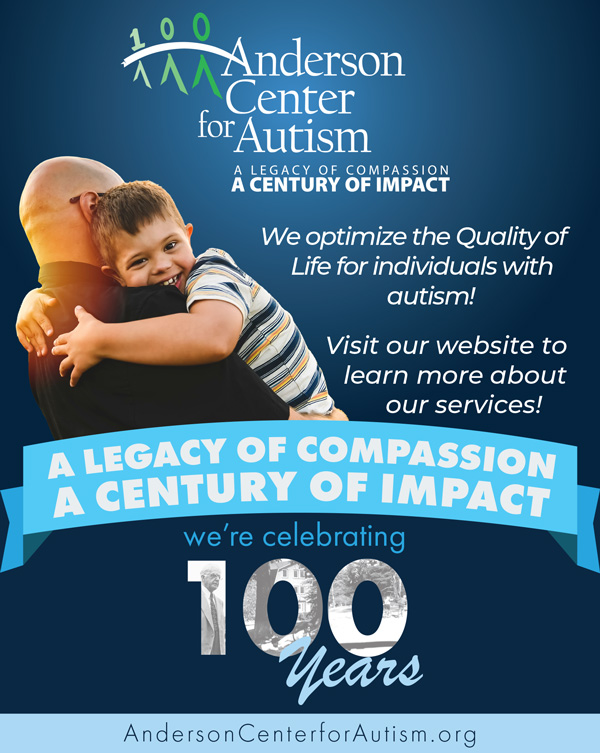While the movement toward autism acceptance is certainly something to smile about, there remain many injustices for this population that must be addressed. Among them, disparities in dental care. Data gathered from a survey by the New York State Office for People with Developmental Disabilities (OPWDD) disclosed that 15,000 individuals with intellectual disabilities (IDD) living in New York struggle to gain access to all-inclusive dental care (Koppell, 2022).

This problem leads to others; we all know oral health is directly tied to overall health. Periodontal disease, for example, can elevate blood pressure and increase stroke risk. Bacteria in the mouth can enter the bloodstream, traveling to organs like the lungs, where it may wreak havoc. And, of course, a simple issue like a cavity – typically resolved with an easy filling – can lead to tooth loss if not treated. According to Healthy People 2030, 13.4% of children ages 3-19 have untreated tooth decay, making tooth decay one of the main childhood diseases (Healthy People 2030, 2020). For most, dental visits twice a year come easily, which mitigates that risk. However, that is not at all the case for autistic and neurodivergent individuals.
A study by Erwin et al. (2022) focuses on oral health inequities faced by autistic children and the susceptibility to being at a higher risk of dental disease due to considerable levels of unmet needs concerning oral health and access to dental care. The study gathered evidence on the factors that affect access to care, oral health behaviors, and the delivery of dental care to children diagnosed with autism.
In a questionnaire given to dental providers, 72.3% of US dentists identified that financial compensation when treating this population was insufficient due to the extended amount of chair time to acquaint or desensitize this population. We must address these issues.
One reason for the inequity is the lack of training during dental school. It is time that we call upon all institutions of higher education to acknowledge the fact that 1 in 36 are now diagnosed with autism and ask that every curriculum include coursework that leads to a greater understanding of how to best support people with sensory processing challenges.
For Touro College of Dental Medicine at New York Medical College, that call came from Anderson Center for Autism recently and prompted a favorable response and near-immediate action. Our team at Anderson has collaborated with them on a second round of dental training programs to ensure that trainees can support the specific dental care needs of individuals on the spectrum. It has been so heartening for us to see everyone involved embracing challenges as opportunities; Touro College of Dental Medicine at New York Medical College professors are leading the way with their dedication to closing gaps in dental disparities. We hope that other educational institutions are inspired by their work.
And research supports the need for such an effort. A mixed-method study by Krishnan et al. (2019) explored barriers to dental care that caregivers and children with special needs encounter. A pre-validated questionnaire was developed to gauge difficulties in caring for children with disabilities in the care of dentists, as well as in-depth interviews and focused discussions with caregivers and the difficulties faced in providing oral hygiene. This study identified the need for hands-on training for dental providers to be incorporated into the dental curriculum to bridge the gap in dental disparities for this population. The study additionally suggests that accommodation be made in the clinical setting to adapt to the sensory needs of children with special needs to ensure successful dental encounters.
Regardless of whether subject material is covered in dental school, it is also notable that there are now options for professional development once a practice is launched. For example, dentists, hygienists, and their employees can work with Anderson Center Consulting and Training (ACCT) to gain designation as Autism Supportive Environments. ACCT offers onsite and online training that empowers businesses, organizations, and groups with the tools and strategies needed to become inclusive. Participants can gain skills that will support more equitable care and, ultimately, better health outcomes in just a few hours.
However, expanding opportunities for dentists and related professionals to learn and grow is just a starting point. Like every other sector of the economy, finances must be considered as we explore the dental disparity dilemma.
Because many autistic and neurodivergent individuals have Medicaid as their primary insurance (which means a low reimbursement rate for providers), there tends to be a very small pool of dentists from which to choose. That said, if we are going to make dental care more available to autistic individuals, we must advocate for increased reimbursement rates so that more dentists will be willing to accept Medicaid – and, hopefully, those dentists will also pursue the necessary training and education to ensure appropriate and accommodating service delivery.
Also, critically important from a fiscal standpoint is the need for a medical billing code for desensitization in the dental setting. Autistic and neurodivergent individuals often struggle to endure the sensory overload of a dental exam; ICD-10 coding would help break that barrier, allowing for a more comfortable experience for each patient and a more thorough dental exam with better results.
At Anderson Center for Autism, our mission is to “optimize the quality of life for individuals with autism.” We see this as more than a mission; we believe we are part of a broader humanitarian movement. Addressing disparities in dental care for a population that is still so underserved will help us bring our mission to life for autistic and neurodivergent people everywhere. We must find ways to ensure that adequate dental care linked to overall health and wellness is available.
If we are truly going to mark a shift from ‘autism awareness’ into an era marked by ‘autism acceptance,’ we must be mindful of gaps and look for ways to bridge them. The dental disparity dilemma can be solved – and while we are making strides, we have some work to do.
Gina Williamson, RN, MSN, is the Director of Children’s Services at Anderson Center for Autism. She is pursuing a Doctorate in Nursing Practice (DNP) at Capella University. Learn more at andersoncenterforautism.org.
References
Erwin, J., Paisi, M., Neill, S., Burns, L., Vassallo, I., Nelder, A., Facenfield, J., Devalia, U., Vassallo, T., & Witton, R. (2022). Factors influencing oral health behaviors, access, and delivery of dental care for Autistic Children and Adolescents: A mixed‐methods systematic review. Health Expectations, 25(4), 1269–1318. https://doi.org/10.1111/hex.13544
Healthy People 2030. (2020). Reduce the proportion of children and adolescents with active and untreated tooth decay – oh‑02. source link
Koppell, J. (2022, August). Training dentists on intellectual and developmental disabilities. Intellectual and Developmental Disabilities dental care. https://ny1.com/nyc/all-boroughs/news-all-day/2022/08/29/helping-people-with-intellectual-and-developmental-disabilities-get-dental-care
Krishnan, L., Iyer, K., & Madan Kumar, P. D. (2019). Barriers in dental care delivery for children with special needs in Chennai, India: A mixed method research. Disability, CBR & Inclusive Development, 29(4), 68. https://dcidj.uog.edu.et/index.php/up-j-dcbrid/article/view/313







I am a board member for the Institute for Exceptional Care and we’ve been able to get the ADA to mandate training for all new dental students. We’re working to do the same w AMA. Also, there too light of a reference to the desperate need for multiple modalities of sedation. And the exorbitant rates because we pay out of pocket. Lastly, we need to advocate for cosmetic dentistry to be an alternative to orthodontics. A single day sedated implant procedure is more practical for many. Finally, they need to know that looking approachable is critical for socialization.